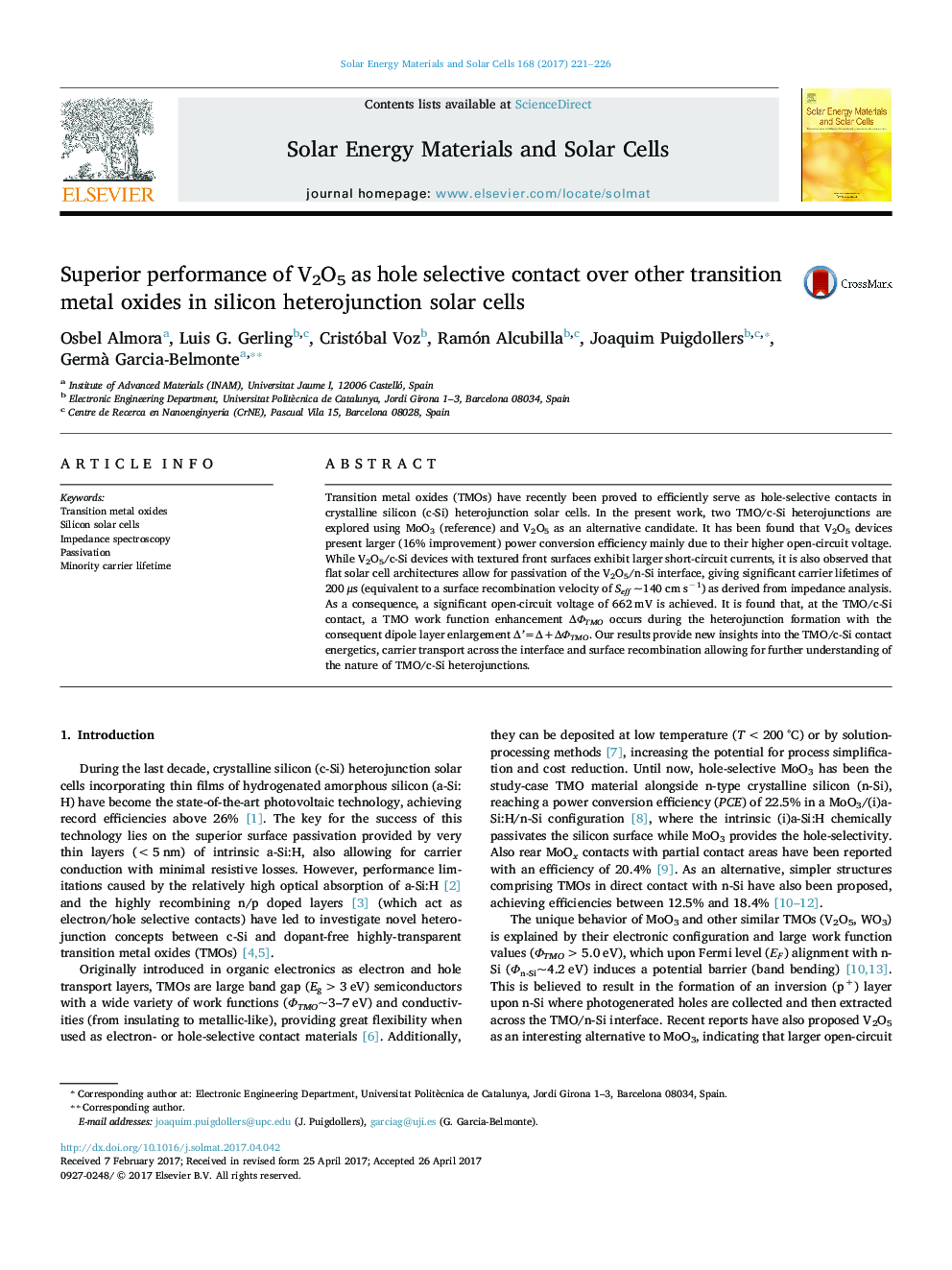| Article ID | Journal | Published Year | Pages | File Type |
|---|---|---|---|---|
| 4758800 | Solar Energy Materials and Solar Cells | 2017 | 6 Pages |
Abstract
Transition metal oxides (TMOs) have recently been proved to efficiently serve as hole-selective contacts in crystalline silicon (c-Si) heterojunction solar cells. In the present work, two TMO/c-Si heterojunctions are explored using MoO3 (reference) and V2O5 as an alternative candidate. It has been found that V2O5 devices present larger (16% improvement) power conversion efficiency mainly due to their higher open-circuit voltage. While V2O5/c-Si devices with textured front surfaces exhibit larger short-circuit currents, it is also observed that flat solar cell architectures allow for passivation of the V2O5/n-Si interface, giving significant carrier lifetimes of 200 μs (equivalent to a surface recombination velocity of Seff ~140 cm sâ1) as derived from impedance analysis. As a consequence, a significant open-circuit voltage of 662 mV is achieved. It is found that, at the TMO/c-Si contact, a TMO work function enhancement ÎΦTMO occurs during the heterojunction formation with the consequent dipole layer enlargement Î'=Î+ÎΦTMO. Our results provide new insights into the TMO/c-Si contact energetics, carrier transport across the interface and surface recombination allowing for further understanding of the nature of TMO/c-Si heterojunctions.
Keywords
Related Topics
Physical Sciences and Engineering
Chemical Engineering
Catalysis
Authors
Osbel Almora, Luis G. Gerling, Cristóbal Voz, Ramón Alcubilla, Joaquim Puigdollers, Germà Garcia-Belmonte,
